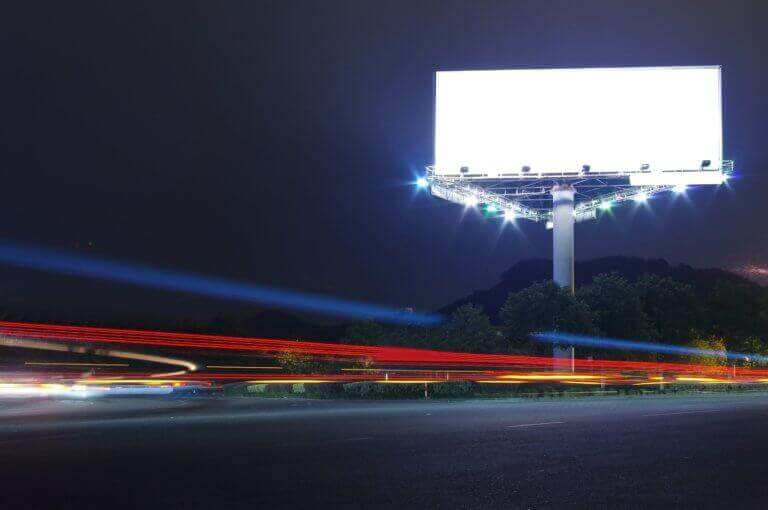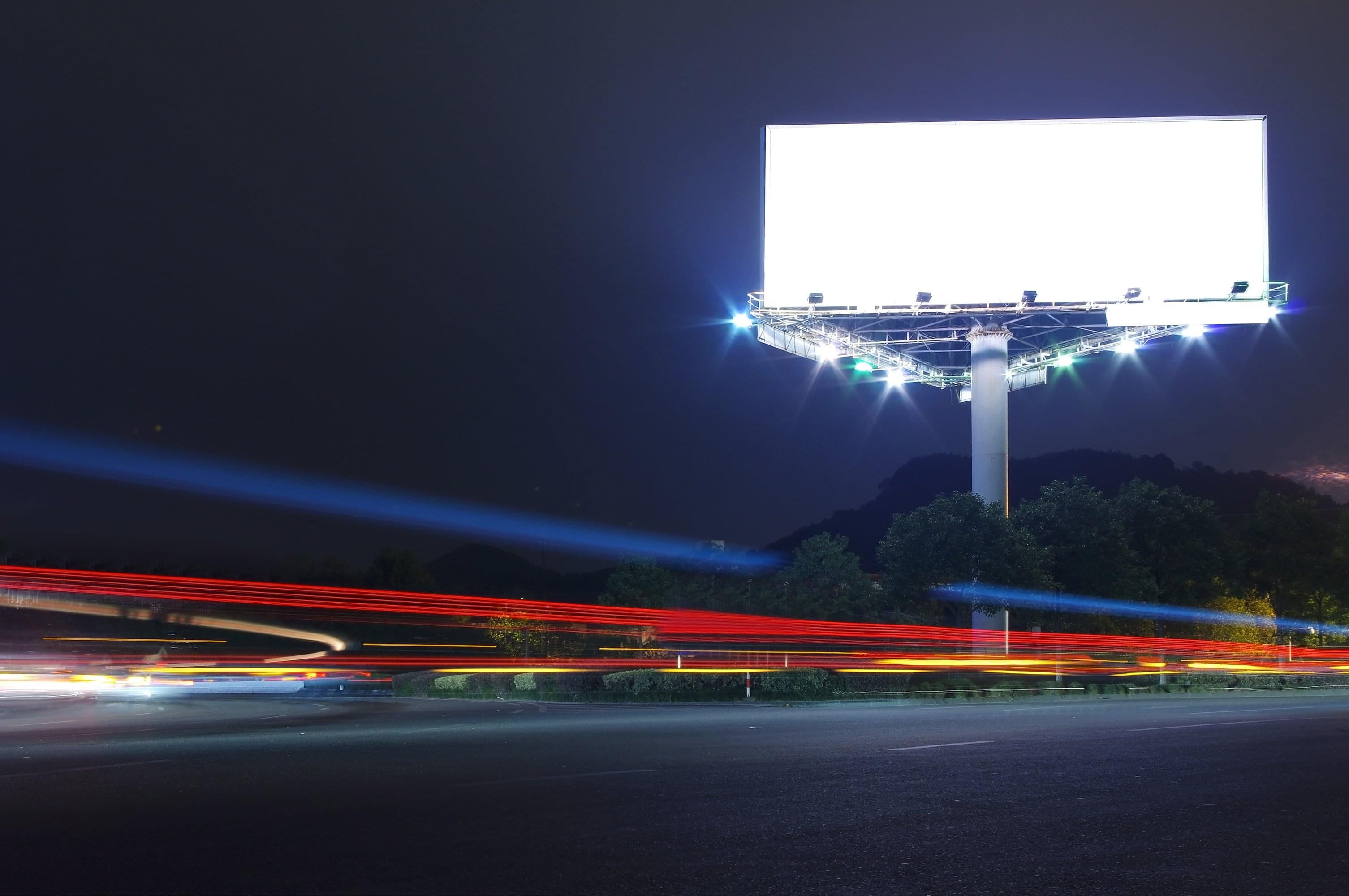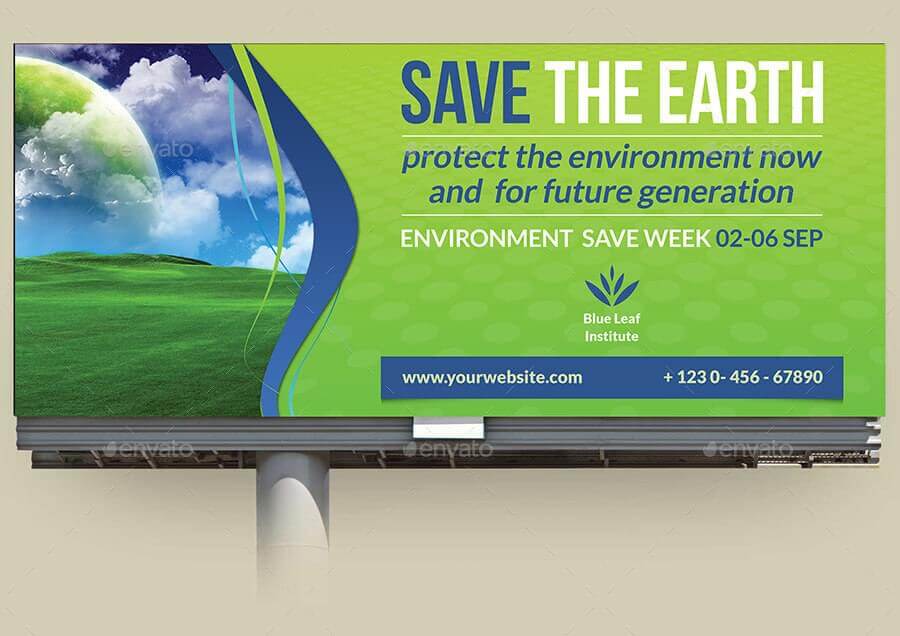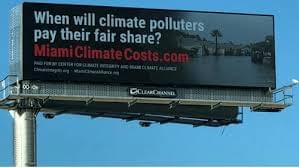
In our ever progressing world, we look to see where we can improve. One of the critical issues that we have been dealing rigorously with is the state of our environment. With technology upgrading exponentially, we more than ever before, know what is negatively affecting our environment.
In this article, we will go through the research that focuses on the effects digital billboards have on the environment. Moreover, whether or not it would be wise to shift to a more sustainable medium of advertising. Today, there are many forms of advertising across numerous mediums. Also, with truck side advertising on the rise across North America, we no longer have to limit ourselves to static digital billboards.

The Outcome of Digital Billboards
Digital billboards have become synonymous on our highways and city streets. They are an extremely popular way of advertising, as they are entertaining and eye-catching to almost anyone passing by them. However, just like with anything, we must ask ourselves, are there any negative factors that come along with it? Well, it is not an easy question to answer, but in this article, I will try to be as informative as possible in order to give the most objective conclusion possible.
If you are unaware, the majority of digital billboards you see out on the streets are made out of an LED screen. LED, while some-what energy efficient, when produced on such a scale as a billboard will be consuming a lot of energy and it will be sure to have some environmental effects. Furthermore, there was a study that concluded that digital billboards due in face produce e-waste once the digital billboard’s life has ended. Moreover, in one year, a digital billboard can consume up to 30 times the energy that an average American homes does. This statistic will be sure to help put things a bit more into perspective. Also, in comparison, a traditional billboard, is only lit up by a few lamps, and only do so at night time. As such, they consume 46 times less energy than digital billboards. So the difference in energy consumption between these two billboards is exceedingly significant. Digital billboards are guilty of higher electricity consumption, increased light pollution and recyclability issues.
Given that, we should take the necessary time required to have an intelligent discussion on the growing popularity of digital signage and its undeniable effects on our planet. The study, mentioned earlier, does give one option to help reduce the e-waste produced by digital billboards, and that is through the use of solar panels to produce the energy required for a digital billboard. Through this process, a digital billboard can be considered carbon-neutral, and would no longer provide the CO2 emissions that are so harmful to our environment. An example of this can be seen in Time Square, one of the most energy-wasting places on the planet. However, they are trying to decrease their carbon footprint slowly, and using solar panels is an excellent start in the cause of creating a healthier world. So, if a place as ad-heavy as New York can make the shift, I’m sure many others will soon follow suit.
Above the e-waste that digital billboards produce, they also play a detrimental role in the destruction of trees. Thousands of trees are destroyed every year for the construction required to set up a digital billboard. We already have huge issues with deforestation, and with the thousands of trees being killed for advertising purposes, it is sure to play a destructive role in the effects deforestation has on our planet. This further proves that digital billboards are only increasing our carbon footprint and are negatively affecting our environment.

Are Digital Billboards the Only Issue?
The above section discussed how digital billboards have negatively affected our planet, given how much e-waste is produced through the use of digital billboards due to the giant LED screens they utilize. However, are digital billboards the only issue? Can other forms of billboards also play a part in increasing our carbon footprint? Well, additional research would suggest that our planet suffers from multiple types of billboards and that digital is not the only problem. Regardless of the kind of billboard being put on the side of the road, it will do some damage. The amount of vinyl used for the billboard itself and the trees that need to be cut in place for the billboard pillar will do enough damage to add to the increasing environmental issues. The vinyl banners cannot be recycled, and while there are talks about changing this in the near-term, they still make up for a lot of the material that is sent to the landfills. To put this into perspective, approximately 300,000 billboards are capable of producing hundreds of thousands of waste in just one year.
Moreover, this is data from just the United States. Furthermore, a lot of that vinyl waste causes significant damage to the ecosystem of the ocean and marine wildlife. So, while digital billboards are the overarching issue in the billboard world, all billboards that require traditional means, seem to have their shortcomings, as well. There is also a popular argument stating that a digital billboard has one LED screen that changes images throughout a pre-decided amount of time, while traditional billboards must have vinyl removed and continuously plastered to get different billboard ads advertised. While there is some truth to this, and digital billboards allow for constant exposure day and night, traditional billboards still win the race for the most eco-friendly form of billboard advertising.
Given all the information presented, it is still seen that digital billboards are the main culprit when it comes to the least eco-friendly way to advertise. The vinyl used on traditional billboards is becoming more and more conscious. They have started doing this through the use of the more knowledge we have today about climate and change and implementing the use of sustainable materials. However, when it comes to digital billboards, there is no possible way to recycle the LED screens they use. The e-waste they produce is final, and there is nothing that can be done about them in the present time. Thus, billboards that are created through the use of vinyl and other paper-based materials, are the safest environmental choice for Out-of-Home (OOH) advertising.

Are There Any Benefits to Digital Billboards?
As mentioned briefly earlier, traditional billboards go through a ton of paper, meaning a lot gets produced in the process. Also, unfortunately, sometimes, some misprints happen during the process. This issue is more common than you might think, and when this occurs, it leads to having a whole new batch freshly printed. Having to print a new batch does not only increase the time and money required, but also the waste that is produced. In the digital billboard world, these issues do not occur. Moreover, if there were to be any issues, they can be usually solved digitally and do not require any time consuming fixes. So at the very least, when it comes to such problems, digital billboards have the upper hand.
Another popular argument that is used in favour of digital billboards is the process that traditional billboards go through when recycling all of the paper waste they accumulate. It is argued that to get all of the paper which is consumed, which is a lot, it must be transferred through the use of these large trucks that travel recycling material to the recycling plant daily. These trucks are usually not fuel efficient and thus add to the waste that is involved with traditional billboards. Also stating that the machines that actually do the recycling also waste high amounts of energy. Moreover, if this is done on a daily, weekly, monthly, basis, it is argued that it is worse for the environment than a digital billboard.
Furthermore, another somewhat strong argument is that digital signage will only get better as technology improves. Also, as we all know, technology is developing fast in this day and age. So it is a safe bet that in the next ten years there will be many improvements in digital billboards, meaning an increase in the positive effects it has on the environment. An example of this is the shift from LCD to LED screens. In the past, LCD was the best that technology could offer, and they were a staple in the digital billboard world. However, through quick technology improvements, LED quickly moved to become the staple. This move highly decreased the amount of energy used as they use less electricity and have a longer life span. This example illustrates how technology advancements can improve digital billboards over night, and we are sure to see more improvements in the near future. While traditional billboards on the other hand, is an analogue medium, that does not really have much space for improvement or advancement.

What is the Best Billboard for the Environment?
After all the research discussed, it can be concluded that while there are some benefits and advantages to using digital billboards, they are unfortunately not the best option for the environment. The amount of e-waste they produce is simply just too much to ignore. Thus, should you be looking into advertising a product or campaign and you are set on using a static billboard than a traditional one would be the best option if you are taking the sustainability factor into consideration.
Furthermore, if you are thinking about the best possible option to advertise, you should consider mobile truck advertising. Most mobile advertising companies do not use their own trucks, meaning that the billboards will be on trucks that would be on the road regardless of ad or campaign plastered on the side of it. Secondly, through the use of mobile billboards you will not have to utilize the poles required for static billboards, which are the cause of many trees being killed. So, through mobile truck side advertising, you are able to offset the e-waste that is produced through LED digital billboards, the issue of having to reprint countless types of vinyls for a traditional billboard, and the carbon footprint that is used through the pole for the billboard itself.
If you were considering going down this route, Movia Media should be an option you consider. Not only do they advertise solely through the use of truck side advertising, they also have their own sustainability initiative, helping offset the carbon footprint that is produced through Out-of-Home advertising.
Regardless, you should always try and reduce your carbon footprint, no matter how small, all actions to help the environment will have a positive effect.
Keywords: Out-of-Home, Digital billboard, waste energy, carbon footprint, eco-friendly.
References:
https://green.blogs.nytimes.com/2010/12/20/do-digital-billboards-waste-energy/
https://yourbusiness.azcentral.com/negative-effect-outdoor-billboards-nature-13414.html
https://airoutdoor.co.uk/blog/billboards-environment/
https://www.digitalsignagetoday.com/articles/is-outdoor-digital-signage-eco-friendly/
https://www.nowsignage.com/blog/2017/05/can-digital-signage-improve-your-environmental-footprint
https://www.armagard.com/news/is-outdoor-digital-signage-eco-friendly/
Updated November 14, 2021


